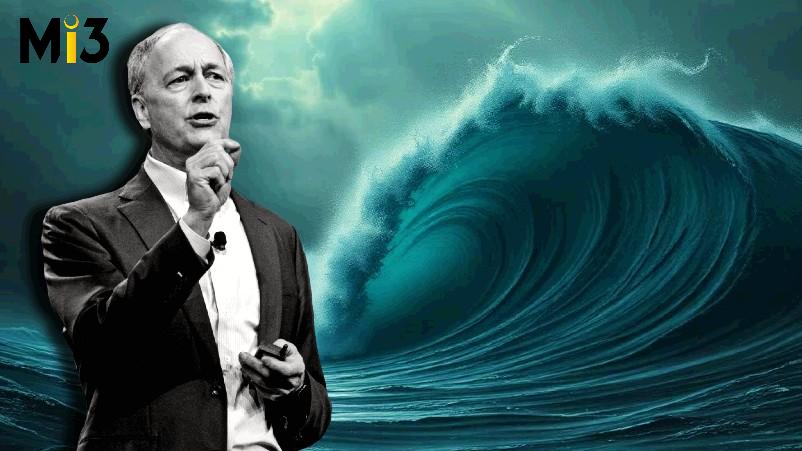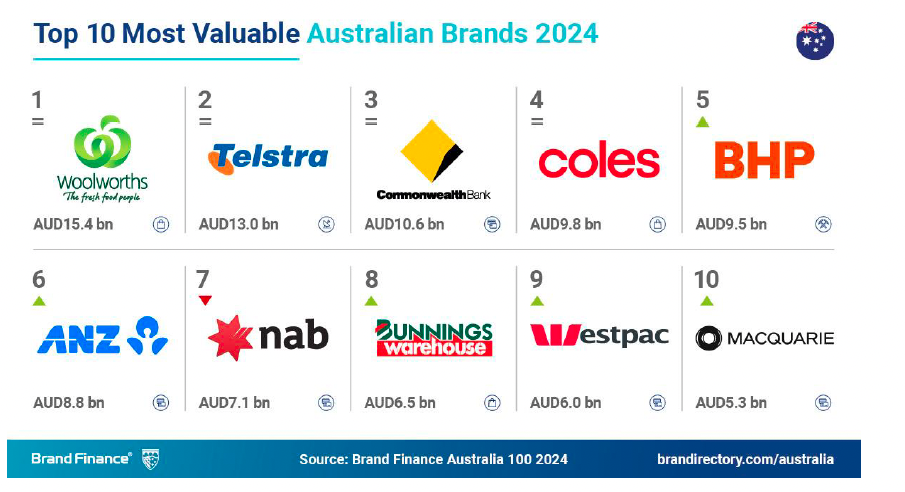Earning attention with bowl haircuts: Why Google partnered up with Sharon Strzelecki and tapped B2C playbook for new B2B blitz

What you need to know:
- Google has taken the wrappers off a decidedly B2B marketing campaign – fronted by iconic Aussie character, Sharon Strzelecki – that feels decidedly B2C.
- ‘If Shaz can do it, youse can too’ taps actress Magda Szubanski comedy smarts to show smaller firms how straightforward it is to use Google Ad tools to find customers. The creative demonstrates this by telling the story of the ‘Bowled & Beautiful’ Salon through long-form video including a mockumentary plus 5-minute explainer video of Sharon setting up a Google Ad campaign.
- According to Google group marketing manager, Duncan McGrath, adopting comedy and an iconic Australian character is all about capturing the attention of the most time poor of audience cohorts: The SMB.
- It’s also reflective of a shift in Google’s B2B marketing strategy to not just tackle the ‘why’ of Google Ads, but how address a significant gap in the funnel: B2B converting and becoming Google Ads customers.
- For Emotive managing partner and head of strategy, Michael Hogg, the work is a unique example of a campaign in the B2B space that’s actually trying to earn attention, not just bore SMBs with product messaging or dry howto videos. As he says, “It’s about not taking attention for granted in the B2B world because I think that is the cardinal sin so much of B2B marketing falls into.”
Bowl header bidding
“We knew we just couldn’t take their attention for granted,” Google group marketing manager, Duncan McGrath, said of the tech giant’s latest B2B marketing campaign. “With increased media fragmentation and multi-screen behaviour, it’s well established that as marketers, we need to earn our audience’s attention. However, this is more commonly considered a B2C task. But it’s equally true in B2B – and necessary.
“It’s especially so in our case, where we are trying to market to SMBs who are among the most time poor people on the planet. We knew we couldn’t take their attention for granted. That played a big part therefore in how we devised the specifics on strategy and product. But from the outset, we wanted to bring creativity to the task so we could make sure we cut through.”
So sums up Google’s new B2B marketing campaign unveiled on 1 July. Fronted by iconic Aussie character, Sharon Strzelecki, the ‘If Shaz can do it, youse can too’ campaign engages the comedic cleverness of actress, Magda Szubanski, through her Kath N Kim character, to show small and medium businesses – SMBs – how straightforward it is to use Google Ad tools to find customers. The creative demonstrates this through the ‘Bowled & Beautiful’ Salon, Sharon’s new hairdressing business offering a range of bowlcut hair styles to consumers willing enough to adopt them.
In the mix are a five-minute how-to explainer, which features ‘Silicon Valley Strzelecki’ setting up a search campaign through Google Ads. There’s also a four-minute ‘mockumentary’ detailing how Sharon’s Bowled & Beautiful salon came to life. Featured in the video are her dynamic salon staff, as well as highlights of styling options from the ‘Ramekin’ to the ‘bowl and spoon’. Plus there’s a cameo of Australian Cricket legend, Adam Gilchrist, along with 60-second and 15-second YouTube video spots.
In addition, an in-show media integration with David Koch’s Business Builders program on Channel 7 sees Kochie interviewing Sharon and testing out some of her innovative product wares. Google is also hoping to kickstart a ‘bowl cut aficionado movement’ on LinkedIn thanks to a generative AI bowl cut overlay tool allowing anyone to don a Sharon-inspired hairdo.
A dedicated Bowled & Beautiful website is also available, found via an easter egg-styled search campaign. All creative carries the tagline, ‘If Shaz can do it, youse can do it’. The concept and execution has been done with creative agency, Emotive.
Why, how shift
Well before any creative was dreamed up and Sharon came on the scene was the impetus to shift from ‘why’ SMBs should use Google Ad tools, to ‘how’ to actually use them, according to McGrath. While many SMBs are aware of and even consider Google Ad tools as an important way of finding new customers, Google insights found they’re faltering on conversion.
“The challenge was even those who think it’s already important to their business were not all signing up. Some customers, having never used us before, worried they wouldn’t be able to set it up right,” McGrath told Mi3.
Adding impetus is the fact 61 per cent of Australian SMBs see acquiring new customers as their number one challenge, per Kantar data.
“Our next insight came from looking at existing customer sentiment. Many shared that concern pre-signup,” McGrath continued. “When they signed up to the ad platform though, they found it to be intuitive to use and not as hard as they thought. So this became the focus of the campaign: To show how easy it is to get started and grow marketers’ and SMB’s confidence to create their first campaign.”
Long-form was the natural format choice, McGrath says. “But our creative challenge was that we can’t just be a long boring explainer video. These people are time poor. We needed a mechanic that’s going to actually hold attention while we’re effectively educating at scale.
“That’s why the character of Sharon Strzelecki was perfect. If an accident-prone indoor leg spinner and business owner from Fountain Lakes could use it, then ‘youse can too’. That synergy between the strategic messaging takeout and the character, plus Magda’s comedic genius, gave us confidence from the start this was the right idea.”
Emotive managing partner and head of strategy, Michael Hogg, says the aim was to solve a persistent perception problem around Google Ads. This required a different approach to shift the dial.
“It’s about not taking attention for granted in the B2B world because I think that is the cardinal sin so much of B2B marketing falls into,” he suggested. “There’s also that definition of insanity: Doing the same thing over and over again and expecting a different result. We’re fortunate enough to have amazing data and insight from Google into audience perceptions and usage of the product.
“There were no preconceived notions of what this campaign would look like. But there was an ambition from Duncan and the team plus a hypothesis they had to do something different. And there was that ambition to get attention.”
McGrath notes Google’s ongoing success through its longstanding, case study-led B2B campaign approach explaining ‘why’ Google Ads make sense.
“Being able to see a business owner that looks just like you and is in your vertical, and demonstrating via social proof other people are also finding it to be successful, has been really important,” per McGrath. “That messaging remains important and will be in the mix – we do need to keep reassuring people on the why. The shift we’re making with this campaign is recognising real opportunities now in growing their confidence in the how.”
Sometimes, there's this unhelpful line drawn between brand and performance marketing. I very much see this as a full funnel job. But that doesn't mean we aren't accountable for driving genuine commercial impact with this campaign – we certainly are.
Funny business
Hogg pointed to consistent emphasis on adopting a tone for Google marketing that’s “genuinely and naturally Australian and part of culture”. The tension within the character of Sharon is something Hogg described as “the unlock” for the latest campaign. Incidentally, there was a brand safety element too – Sharon was part of the Google Pixel 7 campaign in 2022.
“When you’re trying to do something so different in this space, that made it more palatable and easier to take to the business,” said Hogg. “Lots of names were thrown out there to explore but not that many hit the Venn Diagram in the middle.”
However, Hogg tapped a mantra long held by Emotive’s MD, Simon Joyce: “You can’t write to one talent initially, you have to have the idea, creative strategy, then find the talent”.
“We had an approach we were really confident about. We were hopeful of engaging Magda, who was top of the list. It was great that we didn’t have to work our way down the list. But it wasn’t all riding on a Magda saying yes in terms of a creative strategy,” he continued.
McGrath also backed Google’s use of humour to hold attention. “It could have been deeply emotional work, or it could have been shocking. But comedy has this unique ability to bring levity into a situation which changes people and makes people uniquely more open to a message,” he suggested.
Hogg also pointed to the “dryness to talking to Google Ads for some audiences”. “The campaign isn’t just a hero video. It’s got the full, how-to explainer, and gets deep into it … it’s not just character and delivery but that humour to earn the right to do which is key to delivering hard-working assets.
“There are not that many emotional vehicles to carry that kind of content or that would let us go all the way through,” per Hogg.
“I’ll also point to the credibility of a third party delivering the message. Sharon is a fictional character everyone’s familiar with. From our point of view on Google, there’s humility to this. Google telling you it’s easy on Google’s behalf is received very differently from an entertaining character or small business owner telling you it’s easy. Being that one step removed is really important for engagement and for that relationship.”
Selling in Strzelecki
For McGrath, selling in the B2B campaign has been a journey that started “long before we got to creative”.
“Firstly, it was about understanding the customer. In marketing at Google, we talk about our role as to know the user, know the magic, which is the product capability, and connect the two,” he offered.
Knowing the user came through the qual and quant studies, plus focus group testing on different ideas. “That’s when we learnt this insight that when you take the moment to explain the steps, people are pleasantly surprised this doesn’t seem as daunting as they once thought,” McGrath continued.
“Next, it’s about aligning critical stakeholders across the business. The important thing here was to understand the unique needs of those different parts of our organisation. This applies not just to Google, but in general. You need to know their needs, timelines, who they need to influence, what they’re accountable for. We need to make sure what marketing can deliver to the business is delivering for the business.”
Coming armed with insights and data was equally vital.
“When you’re sitting down with a stakeholder in finance or sales, it’s important to help them understand what the insight told us, and the job to be done, as well as how we will be measuring the true incremental impact of the campaign,” per McGrath. “The creative testing we did also helped reassure people we were onto something that might resonate.”
So much B2B marketing isn’t advertising led, Hogg added. Or when it is, it’s often done on smaller budgets. No one was revealing budget across this campaign, but it’s clearly significant.
“Often, B2B marketing is not a case of practitioners, philosophies or goals, it’s just pragmatism. That was the biggest difference here,” Hogg said. “It needs a champion as well. This has been quite a long journey to get to this point for us, but it’s been a hell of a lot longer journey for Duncan … who has championed this through the business all the way through the process.
“We didn’t feel as a creative agency we were trying to sell creative to Google, or creative strategy. The strategy of being creative is what was pre-sold in by Duncan’s team. The steps are what the steps are, and we worked through them just like we would a consumer campaign.”
It’s about not taking attention for granted in the B2B world because I think that is the cardinal sin so much of B2B marketing falls into. There's also that definition of insanity: Doing the same thing over and over again and expecting a different result.
‘Not brand v performance’
As to short and long-term measures of success, McGrath points to incremental commercial impact, alongside typical brand and channel performance metrics.
“Sometimes, there’s this unhelpful line drawn between brand and performance marketing. I very much see this as a full funnel job. But that doesn’t mean we aren’t accountable for driving genuine commercial impact with this campaign – we certainly are,” he said. “It really is lower funnel in its intent. We need to speak to those emotional as well as functional barriers to purchase. That’s critical for how we go to market. But ultimately the commercial impact is what puts the wind in the sails.”
Which brings us back to another bugbear for many B2B marketers: Proving efficacy of upper funnel media and creative investments. McGrath agrees it’s a more challenging ask than in the consumer space, not least because of longer conversion windows.
“You can have a really complex path to purchase with multiple conversion and touch points. Is it online? Is it the in-country sales team who closed it? Was it the offshore call centre? Is it your channel partner, acquisition channels?”
“That’s where having a long enough campaign in market to influence change is important. But it’s also having a long enough post-campaign measurement window to see the impact through.”
Max headroom
Google’s new campaign does have a secondary job to do: Promote AI-powered product enhancements coming into the Google Ads toolkit. Among these are its Performance Max AI-powered campaign type, now the default campaign for new advertisers. (Though some are unconvinced of its merits.)
Product Studio and Asset Generation also boast generative AI capabilities. Kantar studies found 82 per cent marketers who’ve adopted AI tools in campaign management claim improved marketing performance and efficiency. Google also quotes a 27 per cent higher conversion rate for Performance Max at a similar average cost per acquisition than standard Google Ads search campaign.
With macro conditions and the cost-of-living crisis to contend with, there’s also a crunch happening around the cost of doing business, making many SMBs more price sensitive.
“Businesses need their marketing to deliver more with less probably than 18 months ago. They also want it to be easy to manage as time is their most precious resource,” McGrath said. “Way before this campaign, the journey we as an ads product team have been on is thinking about how we solve those two challenges.”
Yet Google was careful to limit references to ‘AI’ in the Strzelecki campaign. “When they hit landing pages, there’s a couple of references of Google’s clever AI pulling the text and images from my website, and making that simpler and it’s referenced throughout. But it’s definitely not about labouring AI for AI’s sake,” McGrath said.
Of course, it wouldn’t be a campaign in 2024 without gen AI somewhere. Google’s campaign comes with a generative AI tool spitting out bowlcut visuals for anyone who fancies wearing a new hairdo in their LinkedIn profile pic.
Per McGrath: “I certainly will have a headshot in LinkedIn, and you’ll see most of anyone you’ve ever met at Google in Australia do so too shortly.”





